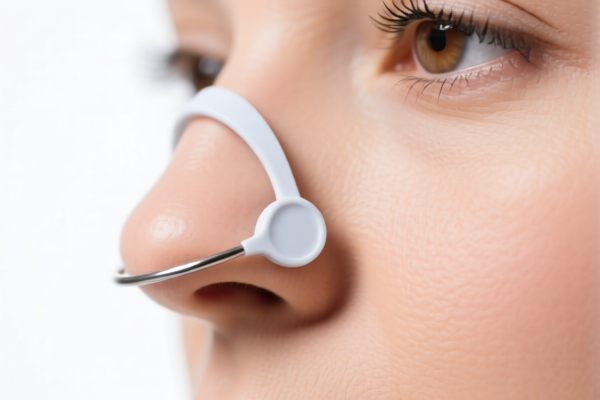| HS Code | Official Doc | Tariff Rate | Origin | Destination | Effective Date |
|---|---|---|---|---|---|
| 9021908100 | Doc | 30.0% | CN | US | 2025-05-12 |
| 6815994170 | Doc | 55.0% | CN | US | 2025-05-12 |
| 3924905650 | Doc | 40.9% | CN | US | 2025-05-12 |
| 3924900500 | Doc | 40.6% | CN | US | 2025-05-12 |




Nasal Clip
A nasal clip is a device designed to clamp onto the bridge and/or nostrils of the nose to occlude or constrict the nasal passages. They are utilized for a variety of purposes, ranging from medical treatments to recreational activities.
Material
Nasal clips are commonly manufactured from the following materials:
- Plastic: Often polypropylene or similar polymers. Lightweight, inexpensive, and readily moldable. Frequently used for general-purpose clips.
- Metal: Typically stainless steel or aluminum. More durable and adjustable than plastic clips, commonly used in competitive swimming.
- Silicone: Offers a soft, comfortable fit, minimizing irritation and pressure. Suitable for extended wear and sensitive skin.
- Combination Materials: Some clips incorporate a metal framework for strength with silicone padding for comfort.
Purpose & Function
The primary function of a nasal clip is to prevent water from entering the nasal passages. However, applications extend beyond this core function:
- Swimming: The most common use. Prevents discomfort, ear infections (by equalizing pressure), and allows swimmers to focus on technique.
- Snorkeling/Diving: Similar to swimming, preventing water ingress and aiding equalization.
- Medical: Used post-nasally surgery to keep the nasal passages open, to reduce swelling, or to deliver medication.
- Breathing Exercises: Used in some breathing techniques (e.g., Wim Hof Method) to restrict airflow through one nostril, focusing breathing efforts.
- Snoring Reduction: Some designs aim to widen nasal passages to improve airflow and reduce snoring.
Usage Scenarios
- Competitive Swimming: Athletes use clips during training and competition.
- Recreational Swimming: Individuals seeking comfort and preventing water irritation.
- Water Sports: Snorkeling, diving, and other activities where nasal passage blockage is desired.
- Post-Operative Care: Following nasal surgeries like rhinoplasty or septoplasty.
- Therapeutic Exercises: During specific breathing or respiratory therapies.
Common Types
- Standard Clips: Plastic or metal clips that clamp over the bridge of the nose and nostrils. Most common and affordable.
- Plug-Style Clips: Small silicone or plastic inserts that fit inside the nostrils to block the passage. Often used for extended wear or specific medical purposes.
- Adjustable Clips: Metal clips with a spring mechanism allowing for customized pressure and fit.
- Universal Clips: Designed to fit a wide range of nose sizes and shapes.
- Competition Clips: Streamlined, low-profile metal clips designed to minimize drag in competitive swimming.
- Soft Silicone Clips: Prioritize comfort and are suitable for sensitive skin or prolonged use.
Nasal clips are not explicitly listed within the provided reference material. However, based on potential function and application, the following HS codes may be relevant:
- 9021908100: This code covers orthopedic appliances, including crutches, surgical belts and trusses; splints and other fracture appliances; artificial parts of the body; hearing aids and other appliances which are worn or carried, or implanted in the body, to compensate for a defect or disability; parts and accessories thereof: Other: Other. A nasal clip, if used for medical support or to address a physical deficiency, could fall under this classification. The total tax rate is 30.0% (0.0% base tariff, 0.0% additional tariff, 30.0% additional tariff after April 2, 2025).
- 3924905650: This code covers tableware, kitchenware, other household articles and hygienic or toilet articles, of plastics: Other: Other Other. If the nasal clip is made of plastic and considered a hygienic or toilet article, it may be classified under this code. The total tax rate is 40.9% (3.4% base tariff, 7.5% additional tariff, 30.0% additional tariff after April 2, 2025).
According to the provided reference material, the HS code options related to 'nasal clip' are limited, with only the following 2 found.
It is important to determine the material composition and intended use of the nasal clip to ensure accurate classification. If the clip is used for medical purposes, 9021908100 may be more appropriate. If it is a general hygiene product made of plastic, 3924905650 may be suitable.
Customer Reviews
No reviews yet.